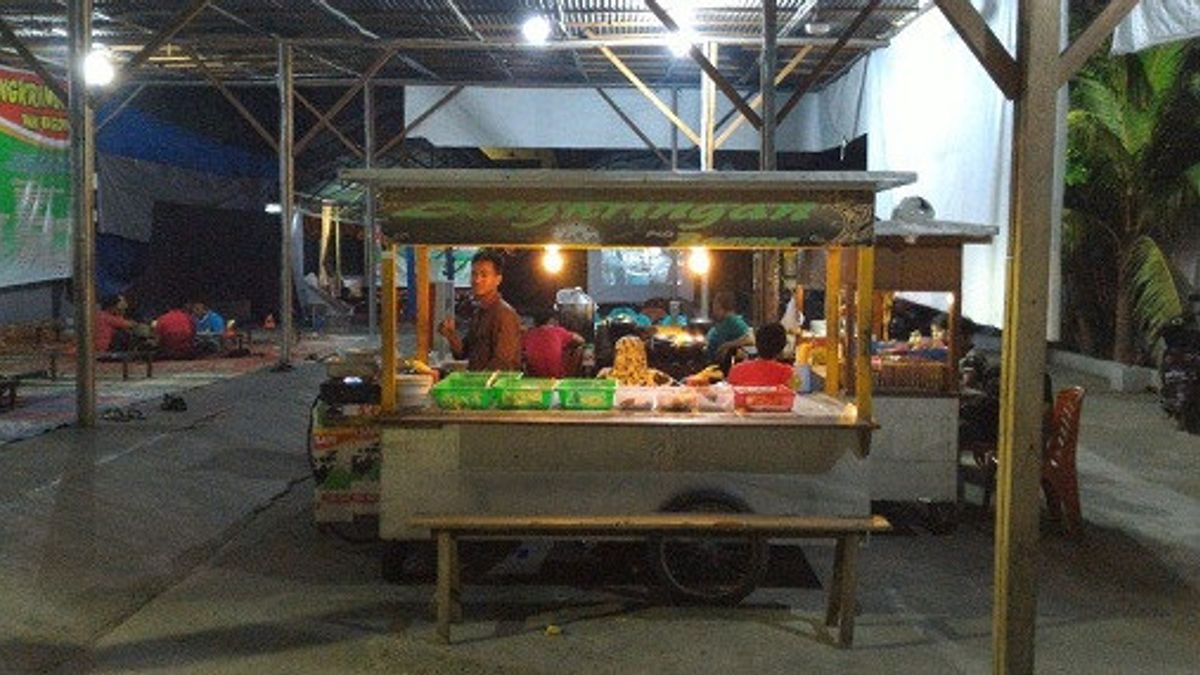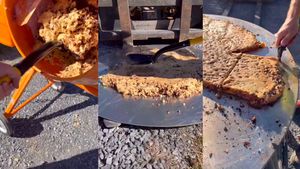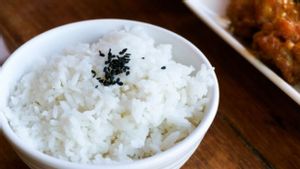JAKARTA - Yogyakarta is indeed special. Its tourism appeal has been captivating since time immemorial. There are the Yogyakarta Palace, Mount Merapi, and the five-legged tour. Including angkringan. The presence of these food carts also perpetuates the view that Yogyakarta is a paradise for cheap food.
In another meaning, angkringan is a marker for all groups to gather in one place. Romanticism is one of the forms of diversity offered by the earth of Ngayogyakarta Hadiningrat.
The presence of angkringan in Yogyakarta is inseparable from the presence of HIK bear traders. HIK's popularity began in Klaten in the 1940s. Apart from the name HIK, the pikulan traders are also known as wedangan traders, or telu kettle stalls.
It is said that there are two groups that have popularized the image of HIK traders. One group popularized HIK in Surakarta. Others, popularized it in Yogyakarta. Launching Kompas.com, the figure who popularized HIK to Surakarta was Eyang Karso Dikromo, whose youth was familiarly called Jukut.
Karso, who comes from Ngerangan Village, Klaten, migrated to Solo when he was 15 years old, or in the 1930s. In Solo he tried a variety of professions. However, over time Karso became interested in the food business with his capital - the cradle that was carried at the top - when he saw his friend selling terikan, a typical food from Central Java.
In between selling, Karso got the idea of selling anchovies while selling drinks. The idea is so that buyers can relieve thirst when they finish eating. In his breath, Karso slightly modified his sales pitch. The front is for food, as well as the back is for a drink kettle. To his surprise, the idea brought Karso huge profits.
As a result, residents of the Karso village began to follow their footsteps, who traveled to remote areas of Java, including Yogyakarta. In Yogyakarta the name Pawiro or Pairo became the pioneer. Pawiro who comes from Cawas, Klaten chose to try his luck by migrating to Yogyakarta. Since the beginning, Pawiro has been pursuing his profession as an HIK trader using a pole around the overhang of Yogyakarta Tugu Station.
The origin of the term HIK to angkringan
The term HIK itself comes from two versions. The first version, HIK originates from the screams made by the bear traders while walking around the village shouting the words "Hiikk. Hiiiyyeeeekkk. " Even then, the merchandise is decorated with lantern ornaments (ting lamps). The second version, HIK is a word that originates from the tradition of the Selikuran Night, Keraton Surakarta which has since been known as a special dish from the village (HIK).
Basically HIK is a seller of wedang (hot drinks) and snacks, as well as snacks that are suitable to accompany hot drinks. In the past, HIK traders (almost all men), carried their wares along the narrow streets in the villages. One pikulan contains hot water which is kept boiling, "said Dian Kristiyowati in her study entitled Warung Special Cuisine of the Village (HIK) as a Public Space (2010).
"In other pikulan is full of snacks such as fried bananas, boiled bananas, fried cassava, and many other kinds. To mark his presence, the merchant each briefly shouted the word 'HIK!' Enthusiasts will leave the house, call the hawker, and order drinks and pick up snacks they like. Here all the neighbors also gather, drink and eat together, while discussing certain topics of conversation, such as talk about economic, social or political matters, ”he added.

HIK sellers are growing fast. HIK sellers, who were synonymous with pikulan, are now starting to use carts. Their presence began to mushroom on street vendors throughout Surakarta and Yogyakarta. Since then, the HIK shop has been attached to the image of the city of Surakarta. Meanwhile, the angkringan stalls are attached to the image of the city of Yogyakarta.
In Javanese angkringan comes from the word "angkring" which means a carrying cart. Or "malangkring" which means hanging out by raising one leg on a chair. Moreover, in angkringan everyone who comes is equal. It does not differentiate between immigrants or native Yogyakarta people. Nor does it differentiate between the rich and the common. Therefore, angkringan is a medium that respects diversity.
Because of that, the place to sell angkringan is quite simple. There are only merchandise carts, long benches, and some mats put out for buyers. Its distinctive feature is the presence of lighting in the form of teplok or petromak lamps. Another identity can be seen from the presence of three kettles for hot drinks, so that the name of the telu kettle stall emerged.
“Teman wedangan is also very simple, which is a food that is usually enjoyed by the lower class, such as cat rice, which is a typical menu from HIK. Cat rice, namely white rice, chili sauce, and a piece of milkfish or salted fish. Because the portion is mini, it is called cat rice (just right for the cat portion maybe). Apart from cat rice, there is usually stir-fried tempeh rice as well, "wrote Murdijati Gardjito in the book Kuliner Surakarta: Creating a Nuanced Taste (2018).
Cheap eats heaven image
The popularity of angkringan in Yogyakarta has a wide impact. One of the forms of Yogyakarta's image as a paradise for cheap food. Then, it becomes top of mind for travelers from outside the region when visiting Yogyakarta.
The image even spreads so that it's not just eating at angkringan, which is considered cheap. As long as you are still in Yogyakarta, the food you sell is definitely cheap. Though not necessarily. Cultural observer, Feby Triadi, shared this view.
"If you look at the history of angkringan, of course it is a bit cross-cutting. However, if you look at the social values of the people of Yogyakarta, it certainly has an effect. Because there are some values that are upheld, and they take root. Meanwhile, angkringan, which is famous for its cat rice, and snacks that can be obtained very cheaply, and can be found in every corner of this city, greatly influence the perception of cheapness in the city of Yogya, "said Feby Triadi when contacted by VOI, Thursday, May 27.
At the same time, Yogyakarta is also known as a student city and a tourist city. The nickname also perpetuates the view of the city of Gudeg as a paradise for cheap eats. Moreover, the assumption of cheap food is based on natural construction and quite fertile landscapes on the slopes of Mount Merapi. These advantages are the main reason it is very easy to fulfill the basic needs of the people there.
"The staple foods, vegetables, and natural products are abundant, coupled with the creativity of the people, it makes a lot of special foods or snacks that are born in Yogyakarta. And it is processed straight from there. So not infrequently, in this city (Yogyakarta) the cost of living is cheap, food is cheap, because basic needs can be met directly from the farmer, even directly from nature, ”concluded Feby Triadi.
* Read other information about HISTORY OF NUSANTARA or read other interesting writings from Detha Arya Tifada.
MEMORY OtherThe English, Chinese, Japanese, Arabic, and French versions are automatically generated by the AI. So there may still be inaccuracies in translating, please always see Indonesian as our main language. (system supported by DigitalSiber.id)













